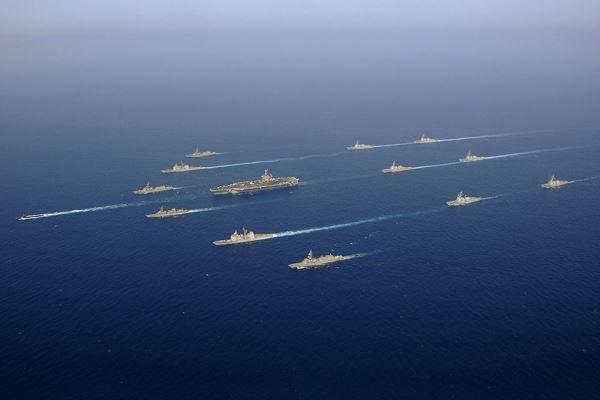Seven years after Navy Secretary Ray Mabus first announced the concept, the Navy will deploy its "Great Green Fleet" late next month, officials told Military.com.
Designed to promote energy-efficient concepts and the use of alternative fuels, the Great Green Fleet will launch with the deployment of the John C. Stennis carrier strike group in January.
"The Great Green Fleet highlights how the Navy and Marine Corps are transforming our energy use to increase our combat capability, operational flexibility and resiliency so that we can go farther, stay longer, and deliver more firepower," Navy spokesman Lt. Chika Onyekanne said in a statement.
"The centerpiece of the Great Green Fleet will be a carrier strike group scheduled to deploy using alternative energy and energy efficiency technologies and operational procedures as part of its normal planned operations and exercises," Onyekanne said.
Navy officials would not go into detail ahead of the launch about the biofuel blend the strike group would be using, the fuel's cost per gallon, or the other energy-saving measures that would be showcased during the deployment. But they did say the launch would be the start of a year of energy-saving efforts that would include participation opportunities across the fleet.
The Navy has said the goal of the Great Green Fleet is to have up to 50 percent of the fuel powering deployed aircraft and ships in 2016 consist of "drop-in" biofuels, which can be used without reconfiguring the engines they power.
A military official familiar with the program said there would also be a list of activities and options available to commands so that they could take part in the Great Green Fleet concept. But the primary objective of the effort, the official said, was to prove that energy-saving practices could increase combat effectiveness. For example, a ship that has to refuel fewer times underway can spend more time accomplishing its objective, the official said.
Mabus announced in 2009 that the Navy would get at least half of its energy from alternative sources by 2020.
The Great Green Fleet program has not been without controversy, however. A demonstration of the concept at the Rim of the Pacific joint exercise in 2012 came under fire when lawmakers learned the 450,000 gallons of biofuel purchased for the event ran the Navy $26 per gallon, or nearly $12 million total. In the furor over the cost of the demonstration, lawmakers passed legislation prohibiting the bulk purchase of biofuels unless they are cost-competitive with traditional fuels.
Officials said the fuels used by the Great Green Fleet would comply with this requirement.
--Hope Hodge Seck can be reached at hope.seck@monster.com. Follow her on Twitter at @HopeSeck.
























